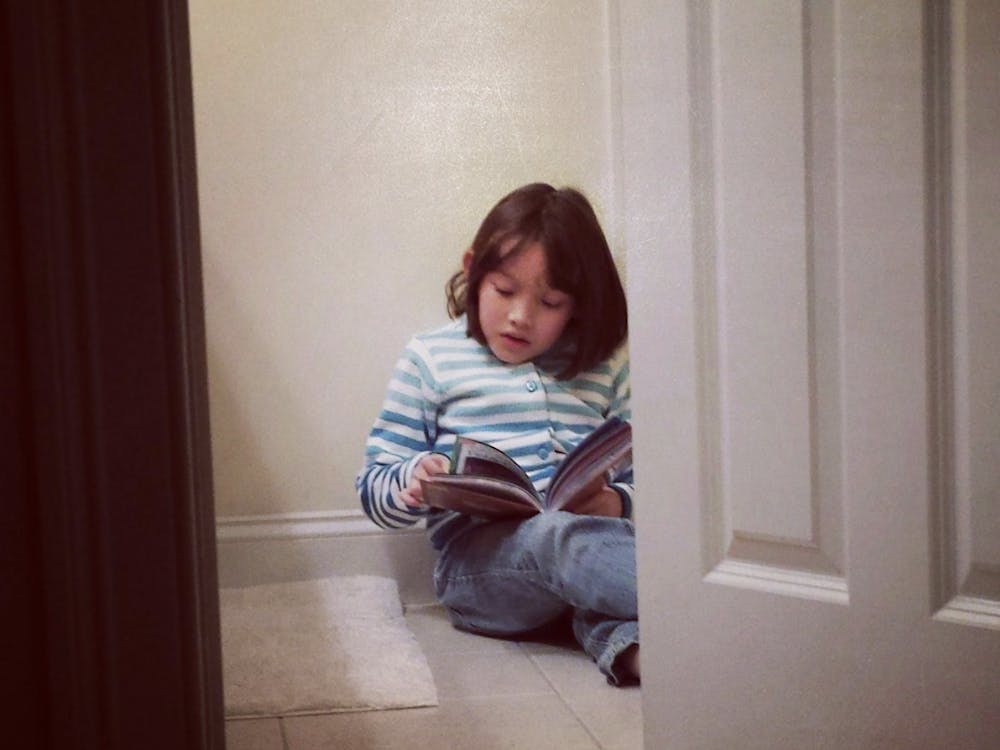There is something about fashion that can make people very nervous,” Anna Wintour says in the documentary The September Issue.
The fashion industry is known as the coolest industry, the mythological, mean, secretive and obsessive-compulsive industry, but what is there beneath all of its layers of marketing? Does it truly come down to “this is now in, that is now out”? Is it, in its essence, disappointingly minuscule and insignificant compared to the blown up farce? Let’s play fashion without the curtains and see if it’s still worth the ticket.
A recurring scene in movies and television shows: Person A lifts the sheet off of some corpse in a morgue. Person B looks at it with this look of shock and terror, and then Person A covers it back up. This is the point of maximum potential in mystery writing. The later reveal is always beneath the audience’s expectations. Three hearts and fours kidneys? Extraterrestrial? Oh, well, whatever, nevermind. The fashion industry knows this trick better than any other industry.
The key word in fashion marketing is distance. When you think about the coolest person you know, it is never your best friend. He/she may be an awesome person, but once you get close enough, we are all so human. The “coolest” person in the book is never the protagonist because we are inside his/her head and no one thinks “cool” thoughts all the time. It’s always the sarcastic sidekick, the favorite character of the audience. “Coolness” means distance, and fashion tries to be oh-so-cool.
The spokespeople of the fashion world are models, and they don’t speak. They don’t make eye contact or smile. They look “out of this world,” surrounded by weird aesthetics like empty, humid hotels or huge golden insects. The way they look is not about sexual attraction, so don’t blame patriarchy for the thin standards. It is the exclusivity of the look, the distance from the audience.
Many models are “ugly” yet “interestingly” so. They look like it would be fascinating to hear their story, as they are so different from us, but then again, models don’t speak. They also look appropriately miserable, as it is commonly acknowledged by the likes of Williamsburg inhabitants and poets that depression has infinitely more depth than joy. Evidently, the corpse is there and the reaction is there, but we never get to see what’s up with it.
The fashion industry thrives off of exclusivity, weird rumors and half-kept secrets. It knows that the opium of the masses is just forbidden stories about lives they aren’t living. Whenever you buy a fashion magazine, it is a request for a fantasy to make real life bearable. The audience is more than willing to participate in the deception. Most of us can’t look life or ourselves straight in the eye, so we revert the gaze to make-believe.
When you’re paying for a dress à la Audrey Hepburn in that movie Lunch at Marguerite’s or whatever, you aren’t just paying for the dress. It comes with a baggage of character, plot and transformation. So, the satisfaction is not simply wearing the dress — it is a game of pretend, all Miss Golightly and “people don’t belong to people.”
Brands are stories, too. Oh, Alexander McQueen committed suicide, such great advertising. Did you know Monroe only wore Chanel to bed? People form alliances with brands and personal relationships with items of clothing. It’s a mutually beneficial relationship: My Anthro dress and I are like Zooey Deschanel in New Girl or my worn out leather jacket and I reference The Runaways.
Different forms of media thrive off each other to infect more and more people. Movies start trends, trends start movies, movies start music, music starts memes, memes start trends, etc., etc.
We are indeed the society of the spectacle, defined by Guy Debord. We don’t live our lives for ourselves, as autonomy can be scary. We turn to images and sources to form opinions. We Google if it is “okay” to wear asymmetrical dresses this season or to kiss on the 17th date.
Maybe we should forget the question “Is it weird to... ?” or “Do people even wear that?” and own up to our lives, experiences and choices. It’s fine. We’re all lost. It’s fine.
So, what is up with fashion? The answer is: quite frankly, nothing much. There is no corpse — the rumors of the person’s death were greatly exaggerated. Is it polka dots or patterns of huge pineapples today, ‘cause I forget? Can I wear a skeleton onesie to class now, if it’s ironic? Imagine the colorful frenzy if we burned all the guides: Victorian costumes, futuristic hats and mathematical formulas on tights. People would find inspiration on their own and pay tribute to whomever/whatever they liked instead of turning over and over to the girl with the wonderful ginger cat just to be safe.
Fashion magazines help to cultivate taste, but they shouldn’t pretend to be the arbiters of elegance. Fashion loves big words (and big hair): Revolution, the Look, the This, the That, bold and chic.
It should try and come up with bigger ideas and stronger characters, instead of just referencing cultures and turning art capitalistic while taking itself too seriously, too. If it were actually fascinating, it wouldn’t need the distance to seem so.
Tulip fields, strange dreams, how the clothes make you feel, the geometry of the dress, the texture, the mood, the memories you live with, the bag, color, patterns, flirting, changing, exploring. All infinitely more inspiring than any of the current trends.




